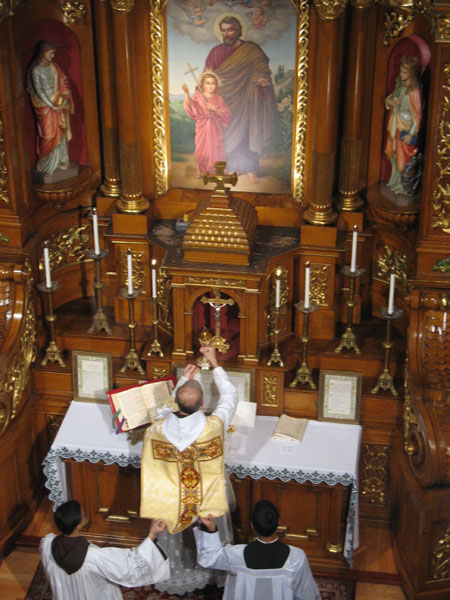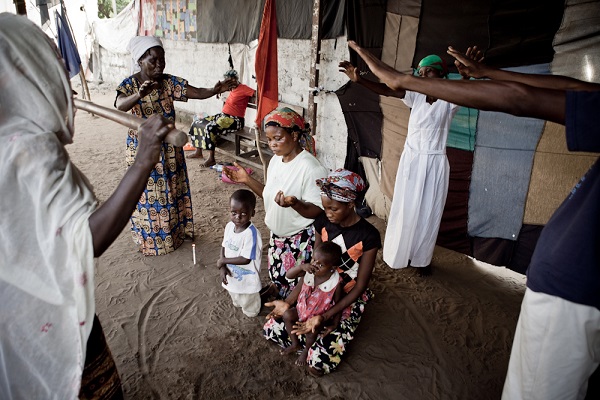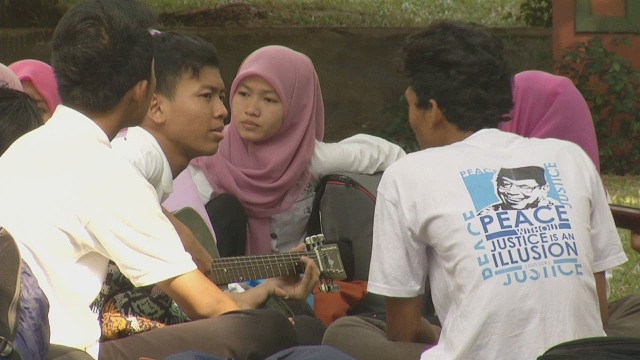
“Deaths of despair” has become a popular term used in the last few years to account for the rising number of middle-aged white Americans who have been dying from suicide, drug overdoses and conditions related to alcoholism, but there have been few attempts to relate the phenomenon to religion. In a paper presented at the early March meeting of the Association for the Study of Religion, Economics, and Culture (ASREC) in Boston, which RW attended, economist Daniel Hungerman of the University of Notre Dame followed other recent research in tracing the start of this mortality trend, which is specific to the U.S., to the early 1990s. He thus discounted the epidemic of opioid abuse as a leading cause of the phenomenon, since the drugs involved in that epidemic were not yet available 30 years ago. Other single causes, such as rising inequality and economic crises, would not have had such a strong effect during that decade. What did occur during the early 1990s that was also singular to the U.S. was the rapid rise of religious non-affiliation—a trend most strongly associated with the same demographics marking those experiencing the deaths of despair.
Using the General Social Survey for data on attendance and affiliation and recent figures on these kinds of deaths, Hungerman found that the two trends of religious disaffiliation and despair-related mortality rates closely tracked each other starting in the 1990s. Whereas middle-aged, non-Hispanic whites had the lowest levels of non-affiliation before the 1990s, afterwards they showed the highest. The same pattern was true for church attendance. Also, middle-aged whites and other racial groups did not show great divergence in attendance and affiliation patterns until after the early 1990s. Hungerman added that the convergence between declining religion and deaths of despair took place among both men and women and rural and non-rural populations. He acknowledged that more research was needed to make a stronger causal case for the relationship between deaths of despair and declining religion, yet added that “[w]e know of no other large coincidental changes of this kind.”

According to an interview by Paix Liturgique (February 12) with Christian Marquant, a French historian and traditional Catholic layman, there are currently 4,500 Catholic priests around the world who celebrate the rite of the Traditional Latin Mass (usus antiquior). The Society of Saint Pius X (SSPX) counts some 660 priests, to which around 100 belonging to the same milieu should be added. There are also around 730 priests affiliated with various institutes fully recognized by Rome, the most numerous one being the Fraternity of Saint Peter with more than 300 priests, followed by the Institute of Christ the King with 112 priests. In addition to this almost 1,500 priests, Marquant adds those diocesan or regular priests who celebrate the Traditional Mass beside the ordinary one. Some have received the mission from their bishop to celebrate it for faithful who have asked for it: there are currently some 200 such priests in Italy, more than 250 in France, and more than 150 in the United Kingdom.
There are also priests who approach traditional institutes (including the SSPX) for instruction in how to celebrate the Traditional Mass. A significant number have been trained in this way. A conservative estimate concludes that there are at least 3,000 priests not affiliated with the traditional milieu who love and celebrate more or less frequently the Traditional Mass. This makes for a total of 4,500. Marquant remarks that this should obviously be put into perspective with reference to global Catholic clergy figures. The most recent official statistics (2016) put the total number of Catholic clergy around the world at 414,467 (including Eastern rite clergy), meaning that priests who exclusively or regularly celebrate the Traditional Mass represent slightly more than one percent of Catholic clergy worldwide—a small percentage, but growing.
(Paix Liturgique,
http://www.paixliturgique.com)

Recent statistics suggest that, in its 10th year, the conservative Anglican Church in North America (ACNA) is growing and moving beyond its main identity as a breakaway church of the Episcopal Church (TEC), according to an article in The Living Church magazine (February 15). The denomination has collected enough substantial data since 2013, with the majority of parishes reporting in, to reveal some dominant trends. Excluding the ACNA’s Canadian churches and the Diocese of South Carolina—which left TEC in 2012 (with a loss of 21,808 members) and affiliated with ACNA in 2017—its membership has grown from 103,090 in 2013 to 105,691 in 2017. Average attendance has grown more in the same period, from 65,885 to 74,027 (excluding South Carolina and Canada). Including South Carolina, the number of ACNA congregations in 2017 was up to 1,020, from 932 in 2013. Excluding South Carolina, the number of congregations has risen modestly from 932 in 2013 to 967 in 2017. Figures from 2014 reveal that 62 ACNA congregations closed between 2013 and 2017, but 109 opened during the same time. Writers David Goodhew and Jeremy Bonner note that “[t]he propensity to proliferate may be increasing. In 2017, 41 congregations opened, while only seven closed.” This may all be due to a 2009 policy of church planting which may have “helped the church move on from the issue of sexuality and conflict with TEC to focus on mission.”
Bonner and Goodhew write that “[o]verall, ACNA’s growth is significant, but not stellar. Its significance lies, in part, in comparison with TEC, which has continued a steady and substantial decline in the same years.” The authors note that while the jurisdiction of many ACNA dioceses extends across multiple states, ACNA has six dioceses that could truly be described as non-territorial. Membership in these dioceses increased from roughly 13,500 to almost 21,000 between 2013 and 2017. One diocese, named C4SO (the Diocese of Churches for the Sake of Others), more than doubled its attendance during this time. In the same period, however, territorial dioceses declined by at least 4,800 members. The majority of ACNA dioceses are neither growing nor shrinking much, yet the “figures suggest that the ACNA dioceses largely composed of ex-TEC parishes have tended to plateau or shrink…. Such shrinkage requires proper research before solid causation can be ascribed. But they may reflect that (a) most TEC parishes were on a downward trajectory well before the split and this has proved hard to arrest; and (b) when these parishes left TEC they also left the umbrella of a large denominational apparatus and were more vulnerable within the more limited infrastructure offered by ACNA.” Denominational figures also show a growth in ethnic parishes, with the ACNA’s Diocese of the Trinity, which is predominantly Nigerian, rapidly proliferating.
(The Living Church, https://livingchurch.org/covenant/2019/02/15/the-growth-of-the-anglican-church-in-north-america/)

Papal visits tend to bring improvement in human rights conditions, although such changes most often come before the pope’s arrival rather than during the visits and afterwards, according to a recent study. The study, presented at the early March meeting of the Association for the Study of Religion, Economics and Culture, which RW attended, looked at papal visits over 40 years and human rights violations in the forms of government repression, killings and incarcerations. Economists Marek Endrich and Jerg Gutmann of the University of Hamburg, who looked at the three years prior to and after each visit as well as the year of the visit, noted that they are often seen as putting governments in the spotlight for human rights abuses and used by leaders to legitimize their rule. But the researchers found that significant improvement on human rights issues tended to take place in the three years prior to the visit but neither in the year of the visit nor in the three years after the event. These findings held regardless of whether it was a Protestant or Catholic country, and it was found not to be significant whether or not the pope or Vatican
intentionally selected countries because they were already experiencing an improving human rights climate.

Witchcraft is a persistent presence throughout the world, especially in Africa, even though recent research suggests it does not play a particularly pro-social role in society. Economists Nathan Nunn of Harvard University and Sara Lowes of Bocconi University presented a paper at the meeting of the Association for the Study of Religion, Economics and Culture in Boston in early March based on experiments conducted in a village in the Democratic Republic of Congo, where they tested pro-social attitudes involving witchcraft. They hypothesized that if an individual knows that a neighbor or acquaintance is involved in witchcraft they would engage in more pro-social attitudes toward them so they would not be targeted with spells and other forms of magic. Nunn and Lowes had participants play a series of games that involved whether to credit or discredit fellow players after being informed (among other information provided about them) that they practiced witchcraft. In one game, those who were associated with witchcraft were found to be 38 percent less likely to be chosen to play in the game. Nunn and Lowes found that the knowledge that people are engaged in witchcraft “seems to induce less pro-social behavior, not more.” As to why witchcraft is then so pervasive, Nunn said a common view is that “it works.” But because strong stigma is still attached to witchcraft, secrecy is encouraged for such beliefs and practices.

The influence of mosques in Indonesia is waning as a result of social media-based preaching and other alternatives, according to a recent study conducted by the Center for the Study of Religion and Culture (CSRC) at Syarif Hidayatullah State Islamic University (UIN) in Jakarta. The study, which surveyed Muslims aged between 17 and 24 in 18 regencies and cities across the country, found that young Muslims are losing interest in studying religion in mosques and that social media-based sermons had reduced the influence of religious education in the family, organizations or other formal educational institutions, reports the Jakarta Post (February 10). Scholars and Muslims gathered in Jakarta recently to discuss how to attract youth to mosques amid the increasing influence of social media in the proliferation of Islamic teachings. A lecturer at UIN Jakarta, Masdar F. Mas’udi, said abandoned mosques were prone to being used by radical groups to disseminate their views. “At least that’s what’s happening in some mosques in Bogor, West Java, where I studied the phenomenon some years ago,” he said recently. He said mosques needed to enliven themselves to stop the spread of radicalism. Recent reports disclosed that a number of mosques in the country had been infiltrated by groups affiliated with the Islamic State (IS) to recruit members for the terrorist network.
